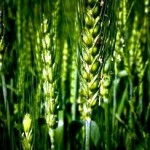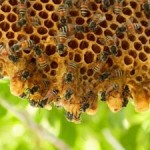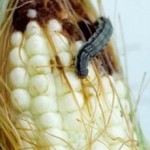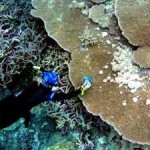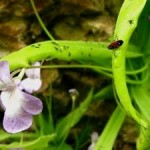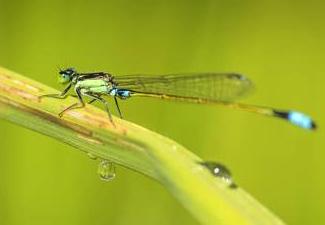
Washington / Leipzig / Sydney – The pesticides, many of which are currently used in Europe and Australia, are responsible for reducing the regional diversity of invertebrates in streams and rivers by up to 42 percent, researchers report in the journal Proceedings of the US Academy of Sciences (PNAS).
Mikhail A. Beketov and Matthias Liess from the Helmholtz Centre for Environmental Research (UFZ) in Leipzig, together with Ben Kefford from the University of Technology, Sydney, and Ralf B. Schäfer from the Institute for Environmental Sciences, Landau, analyzed the impact of pesticides, such as insecticides and fungicides, on the regional biodiversity of invertebrates in flowing waters using data from Germany, France and Victoria in Australia. The authors of the now-published study state that this is the first ever study which has investigated the effects of pesticides on regional biodiversity.
Pesticides, for example those used in agriculture, are among the most-investigated and regulated groups of pollutants. However, until now it was not known whether, or to which extent, and at what concentrations their use causes a reduction in biodiversity in aquatic environments. The researchers investigated these questions and compared the number of species in different regions: in the Hildesheimer Boerde near Braunschweig, in southern Victoria in Australia and in Brittany in France.
In both Europe and Australia, the researchers were able to demonstrate considerable losses in the regional biodiversity of aquatic insects and other freshwater invertebrates. A difference in biodiversity of 42 percent was found between non-contaminated and strongly-contaminated areas in Europe; in Australia, a decrease of 27 percent was demonstrated.
The researchers also discovered that the overall decrease in biodiversity is primarily due to the disappearance of several groups of species that are especially susceptible to pesticides. These mainly include representatives of the stoneflies, mayflies, caddisflies and dragonflies, and are important members of the food chain right up to fish and birds. Biological diversity in such aquatic environments can only be sustained by them because they ensure a regular exchange between surface and ground water, thus functioning as an indicator of water quality.
Protection Concepts Fall Short of Requirements
One worrying result from the study is that the impact of pesticides on these tiny creatures is already catastrophic at concentrations which are considered protective by current European regulation.
The authors point out that the use of pesticides is an important driver for biodiversity loss and that legally-permitted maximum concentrations do not adequately protect the biodiversity of invertebrates in flowing waters. New concepts linking ecology with eco-toxicology are, therefore, urgently needed.
“The current practice of risk assessment is like driving blind on the motorway,” cautions the eco-toxicologist Matthias Liess.
To date, the approval of pesticides has primarily been based on experimental work carried out in laboratories and artificial ecosystems. To be able to assess the ecological impact of such chemical substances properly, existing concepts need to be validated by investigations in real environments as soon as possible.
“The latest results show that the aim of the UN Convention on Biological Diversity to slow down the decline in the number of species by 2020 is jeopardized. Pesticides will always have an impact on ecosystems, no matter how rigid protection concepts are, but realistic considerations regarding the level of protection required for the various ecosystems can only be made if validated assessment concepts are implemented.”
The threat to biodiversity from pesticides has obviously been underestimated in the past.
Check the following link to read/download the Full Study – “Pesticides Reduce Regional Biodiversity of Stream Invertebrates”:
http://www.pnas.org/content/110/27/11039
Source: By Bettina Hennebach, Helmholtz Centre for Environmental Research (UFZ).

